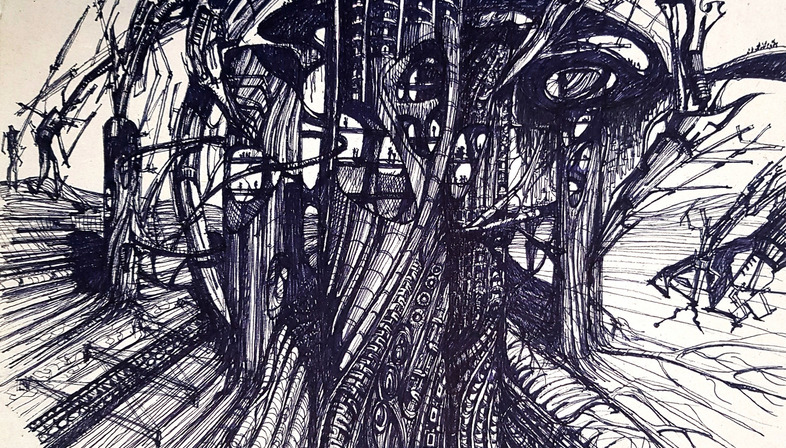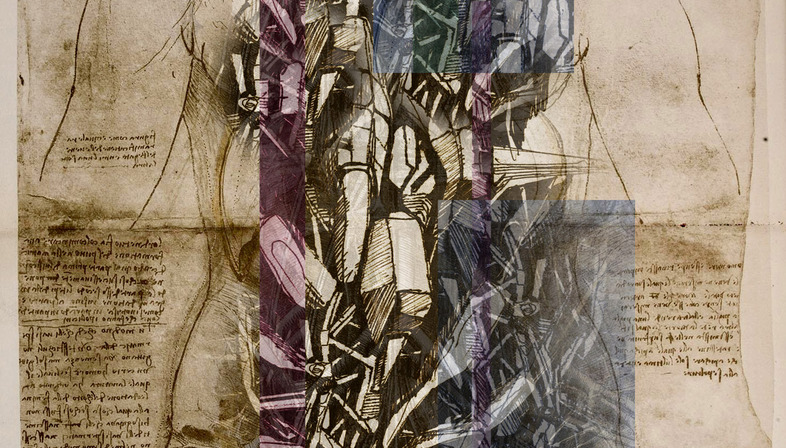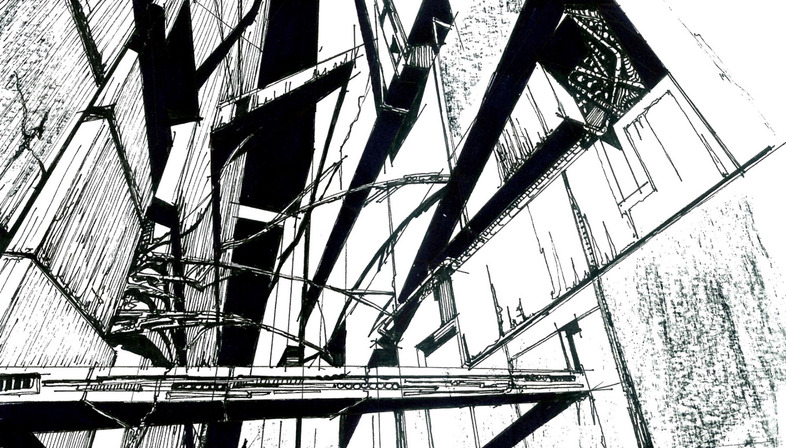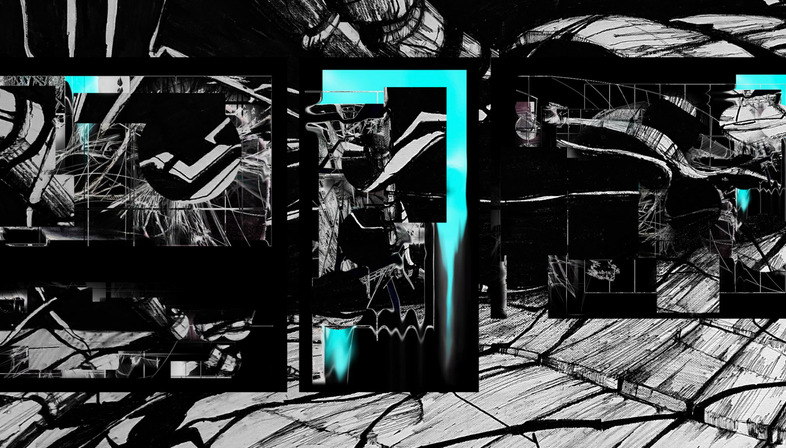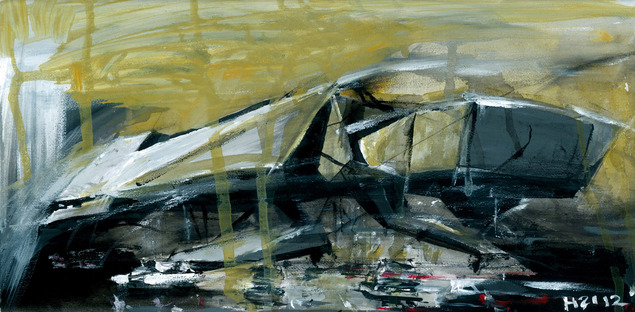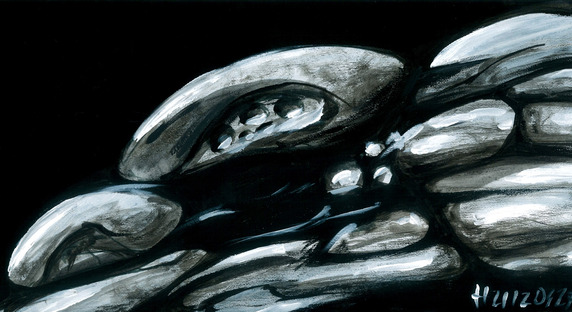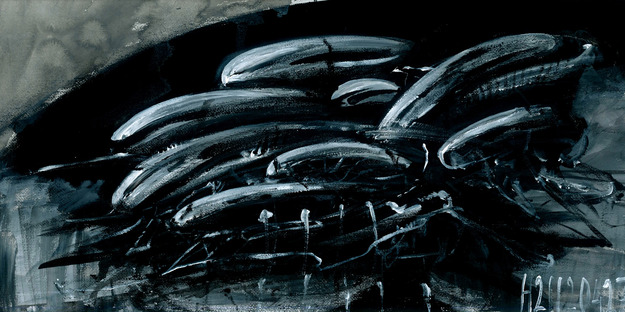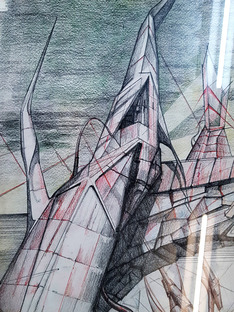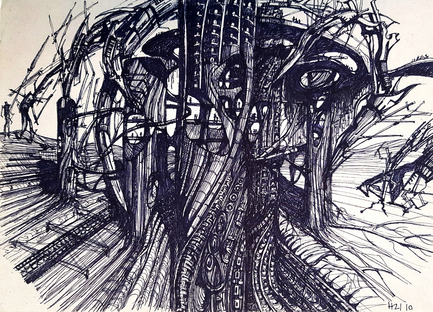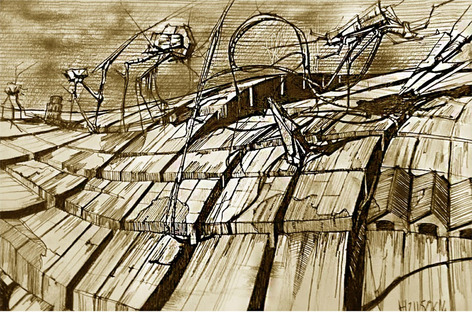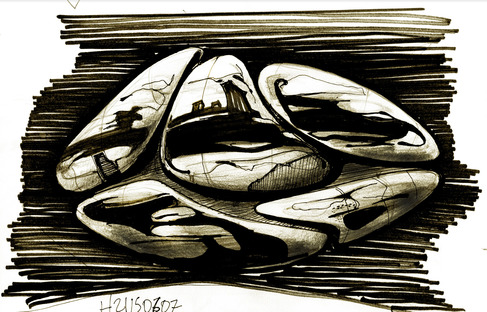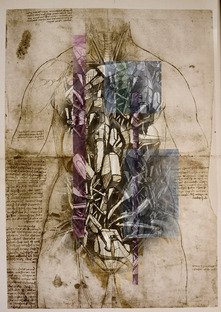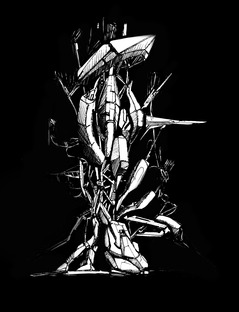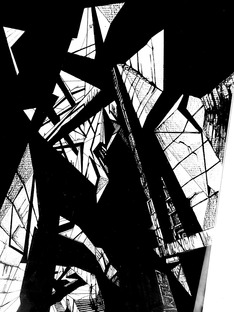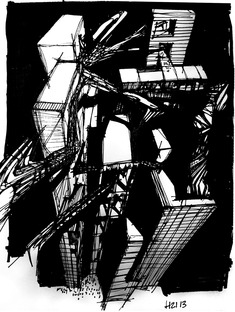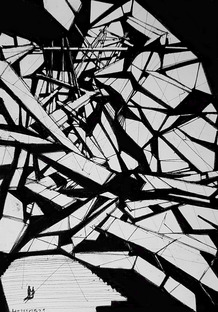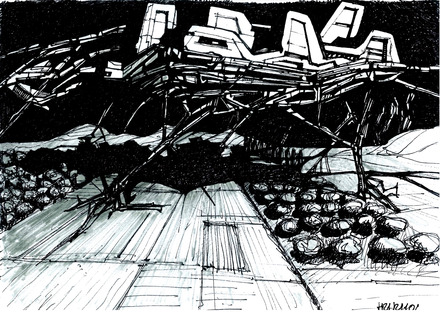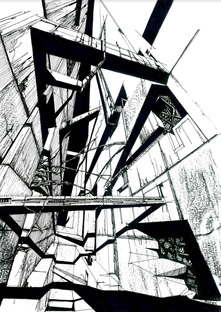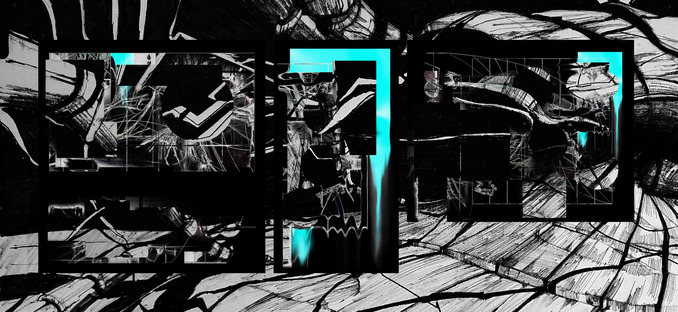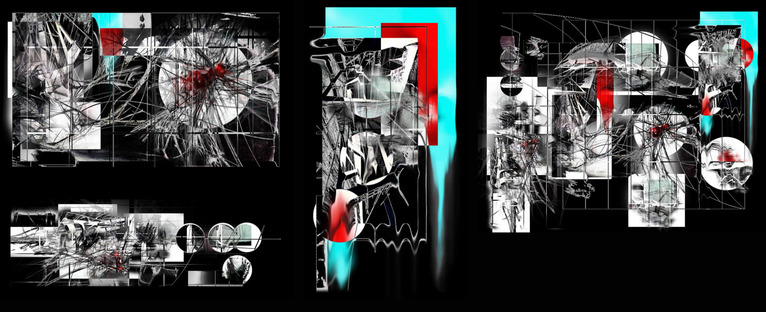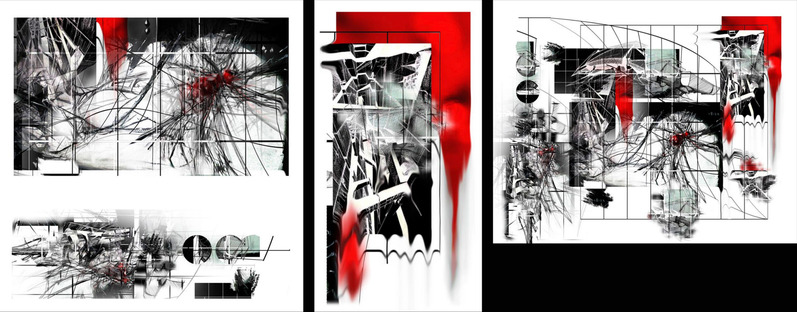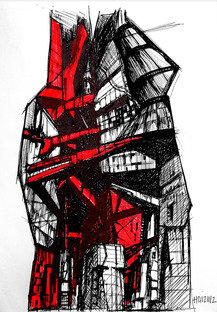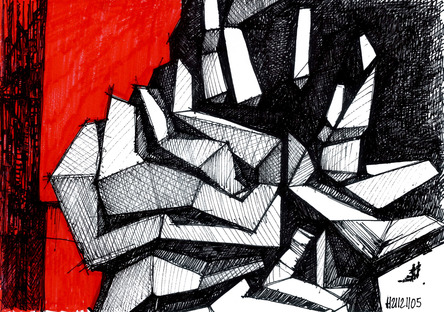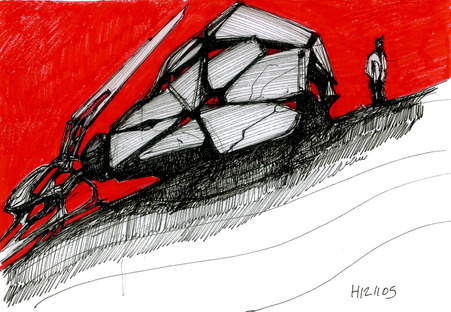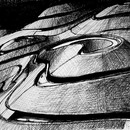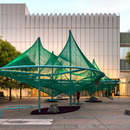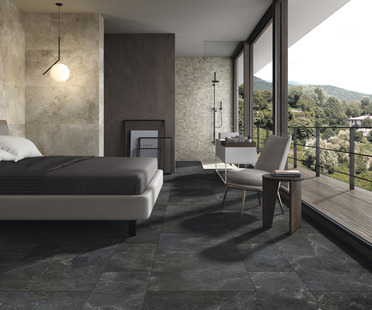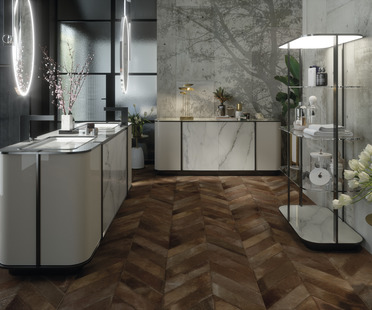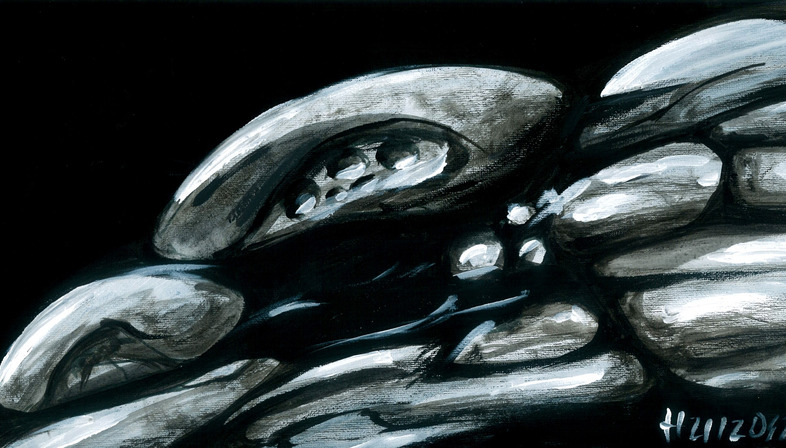 This second part introduces the continuation of the interview with Alessandro Melis, a man that is for me a great pleasure to listen even if the depth and vastness of his culture, which ranges from architecture to biology, from paleoanthropology to all those specialized fields that complement his research, based on a truly extraordinary multidisciplinarity, make us feel really inadequate, since we do not know most of the theories with which he entertains us, always different and extremely intriguing, which speak to us of an ancestral and current bond between man and nature, that evolves in respect for one another, without attempting to prevaricate and dominate but rather to find the balance and harmony of a symbiotic relationship. His stories have involved me into a world that I ignored, which is gradually capturing my interest and my passion.
This second part introduces the continuation of the interview with Alessandro Melis, a man that is for me a great pleasure to listen even if the depth and vastness of his culture, which ranges from architecture to biology, from paleoanthropology to all those specialized fields that complement his research, based on a truly extraordinary multidisciplinarity, make us feel really inadequate, since we do not know most of the theories with which he entertains us, always different and extremely intriguing, which speak to us of an ancestral and current bond between man and nature, that evolves in respect for one another, without attempting to prevaricate and dominate but rather to find the balance and harmony of a symbiotic relationship. His stories have involved me into a world that I ignored, which is gradually capturing my interest and my passion.Alessandro is also able to communicate with an exquisite friendliness endowed with a pungent irony that leads him to comment on even the most bitter moments with detachment and a good dose of philosophy. He is a great educator and, as such, he gives us important lessons of life, making us understand, with his extreme calmness and just as much wisdom, that even the least favorable and most frustrating situations can be overcome with the tenacity of our will and spirit of dedication. He has amply demonstrated this during his academic career, at the moment full of satisfactions but studded with hard sacrifices and encounters that very often have not been supportive and helpful. Were especially influential women of the university world, who, as he himself tells us, believed in his capabilities and helped him to continue his effort, now internationally appreciated; this makes me really proud, because precisely women, who are often described as not very authoritative, have shown a great decision-making freedom and a decidedly much less conventional behavior than those who not always take sides in defense of a real meritocracy. And not to omit another of his gift, I want to conclude, mentioning once again his extraordinary graphic talent. His work as a researcher is highlighted also by the virtuosity of his hand that with extraordinary magnetizing force drags us into primordial landscapes, lunar scenarios or perhaps unknown visions of a world to come.
4—“In times of crisis, according to the behavioral science, the brain shifts from analytical thinking to associative thinking. Driven by associative thinking, architecture holds the power to create truly radical and imaginative solutions. Survival could lie in the capability to connect and reconfigure a collection of behaviors, technologies and functions existing in the presence of the ambiguity and uncertainty". It is in a certain sense the summary of what you hypothesized during a seminar held at the Norman Foster Foundation, in February 2020. Can you explain this concept to us more extensively?
Between 200,000 and 90,000 years ago man developed creativity, a peculiarity that remained under track until it manifested itself in all its exuberance around 40,000 years ago. Paleoanthropologists have therefore wondered how the brain structure contributed to the birth of creativity and, due to those characteristics already present 200,000 years ago, what conditions contributed to its growth thousand of years later. The involvement of transdisciplinary research teams has made possible to discover, as answer to the first question, the increase of neuronal connections in the brain. So it's no longer the brain’s volumetric increase, but, rather, its complex interconnectivity. The answer to the second question is connected to the environmental change, which evidently stimulates the manifestation of creative thinking. We can consequently conclude that creativity is an alternative survival mechanism to that of linear thinking, which, on the other hand, is the standard survival manner. Creativity becomes essential in conditions of crisis, when, evidently, changes are so fast and extreme to require a more radical survival manifestation. From the point of view of neuroscience, art, technology and science represent same manifestations of creativity and associative thinking. Creativity is in short the manifestation of associative thinking, resulting from the increase of connections in the brain. Associative thinking feeds on information of different origin, we could say transdisciplinary, and is characterized by not aiming at a predefined target. It is that "wandering with the mind" that also takes us to unexpected places that we sometimes associate with fantasy. And this is the reason why creativity is a very powerful tool that we can use when the knowledge deriving from the experience, which guides linear thinking (according to the cause-consequence chain), becomes ineffective due to an environmental, social crisis or of other nature.
5 — Architectural task of the future, you say, will be a radical spatial reconfiguration of the built environment, which could more easily adapt to extreme environmental conditions. Do you mean an architecture that could be an evolution of the one currently practiced or that implies a total revolution?
If we continue thinking about creativity as a tool for radical revision of conventional paradigms, we should expect a revolution in architecture, in discontinuity with today's way of building which, data in hand, is among the causes of the crisis. In the short and medium term, it may make sense to readapt the way we design and build to quickly respond to the negative impacts of the environmental crisis. This is what sustainable architecture aspires towards. Some of the projects of Heliopolis 21, such as the pole SR1938 of the University of Pisa, are part of this current. But in the long term, we must think of new paradigms that establish an ecological alliance between man and nature, I would say, indeed, a return of man to the roots of ecology. I understand that radical resilience can be misunderstood. In the past I have been asked what will happen to existing cities and buildings. In reality, the change of paradigm should concern the design processes and by definition be part of an overall rearrangement of the ways in which men settle in the troposfere and of their coexistence with other species. A revolutionary process should therefore not exclude the built environment. It should, instead, contaminate it. I refer to the need to reinterpret both the regeneration and the new ecological construction. Resilience, by definition, implies variability and redundancy of the options we can count on, beyond the trends that we imagine by building exclusively linear evolutionary scenarios. It is not relevant to imagine what the city of the future will look like, if not as instrument for activating associative thinking. Not as a crystallized vision to which design must aim. The shift of paradigm is more intended as tools that allow us to design through processes that can lead us to multiple scenarios, each of which can respond to foreseeable or unpredictable conditions. There are in architecture ideas similar to this. We have to think of the Endless House of Kiesler, the oases of Haus Rucker Co, the Archè of Raimund Abraham, or, more recently, the emphasis on computation (from generative design to the agent based modelling). Perhaps has not been used yet the right key of interpretation of these researches, which biology could guarantee through the study of adaptation processes to environmental conditions. I am thinking, for example, about the concepts of autopoiesis by Humberto Maturana and Francisco Varela, and the exaptation (functional co-optation) of Stephen J. Gould, which offer enormous opportunities, even practical, for design. The transposition of the mentioned hypotheses, in architecture, would imply emphasis on the process, or on the ‘genome’ of the architecture itself. Never about its appearance or what it should functionally do.
6 — Which tools and techniques will use this architecture, that you believe will be able to reverse the city's energy intensive degenerative trend?
Also about this, in my opinion, we can give an immediate answer. For example, nexus food-energy-water-waste certainly contribute to the reversal of the dominant tendency. If the city had adequate integration tools for the production of food, for the energy generation from renewable sources, for water management, and for the waste recycling in a circular urban metabolism logic, the degenerative trend could be contained and mitigated. Regarding the strategic perspective, on the contrary, it is necessary to explain the need for a model borrowed from biology. First of all, it guarantees the possibility of imagining a process that can have the best overview of the options for adapting to the environment on an experience of a few hundred thousand years, just to limit ourselves to paleoanthropology. We, instead, have built our certainties on a very short period, at the end of ten thousand years, when a trend towards deterministic planning has emerged in the collective imagination.
The temporal perspective of the biology of evolution suggests that variability, redundancy of forms and opportunities, in opposition to a monobloc vision of the city, can effectively contribute to the resilience of urban structures. During the heroic phase of Modernism we had an unshakable confidence in the idea of progress, intended as a trend towards industrialization, specialization, zoning in urban planning, and, emphasis on the processes of standardization, modularity and rationality in architecture. Until the 1960s, we have not doubted the success of the inseparable combination of car and road. After less than eighty years, none of the models mentioned has been able to handle the impact of the crisis. Now it is clear that even today, under the pressure of the environmental crisis, the transformation of a city, following an exclusively green key, as a city without cars and only with cycle lanes, as we hear from many proposals, is certainly desirable, compared to the conventional city. At the same time, without adequate reflection on the design processes, also these changes would be the result of a belief equally based on a linear logic, such as that of modernism, and, consequently, risky, in terms of resilience, in the long term. In other words, a resilient future cannot be based on a one-way vision that frames the vision of the city in an image of progress. It is precisely what biology of evolution teaches us, with criticism of the Darwinian theory. And more recently Stephen J. Gould, with the so-called Huxley's chessboard. Essentially, resilience is based on the multiplicity of options, many of which could also prove to be dead ends. Others, unexpectedly, could be functionally co-opted in a completely unforeseen and unexpected way. Regarding the environmental crisis, as an example, Amsterdam has proven to be a much more resilient city than Los Angeles, not only for its cycle paths, but because it is capable of offering 5-6 different transport options. Paradoxically, we could say that many of the aspects that make Amsterdam more resilient are precisely those that come from its historical nature, from visions and projects that had not taken into account the current crisis scenario. How much can our cities improve by extending the concept of variability, redundancy of relationships also to the planning methods, above the city built in the form of available options?
7 — I believe there is someone who thinks that this architecture, that will be based on heteronomy and the participation of sectors, which have not been used yet, could damage the creative and individualistic aspect of the design. Do you think it is a fear that should be justified?
I find it unjustified. The erroneous belief that could exist a progress coinciding with a position of privilege of man with respect to an alleged evolutionary scale, leads us to conclude that our creative ability is proof of our competitive relationship with nature. To explain it in Freudian terms, the Oedipal position towards ecology and the Promethean behavior must have a connection. Art, technology and science, according to the paleoanthropologist Heather Pringle, are equivalent expressions of associative thinking, which manifests itself through creativity. From the point of view of neuroscience, creativity is an ecological and endogenous mechanism with respect to evolution. And it feeds on transdisciplinarity. The phenomenon of Renaissance polygraphy is an example. The autonomy of architecture is therefore the end of creativity. The idea that non-anthropocentric design can be inspired by the biology of evolution, as opposed to deterministic design, implies instead that creativity shares this ecological evolutionary process and is not alternative to it.
8 — The message of the Italian Pavilion, of which you have been appointed curator, for the next Venice Biennale, will be amplified by the polyphonicity of a variegated communication, connected to the expression of contemporary mass media. Can you explain how you thought about this type of approach?
Political decisions about environmental issues have been greatly influenced, often in a distorted way, by the mass media, despite the certainty, since the 1990s, of the existence of global warming and its anthropogenic origin. I have the impression that the scientific community has underestimated the importance of the divulgation. The communicative impact of the creative and industrial arts is enormous in our society, especially with the new generations, and therefore, in order for society to take advantage of the benefits of the research, beyond the academia, the contents must be accessible through these media.
9 — Talking of visionary scenarios that present images of future cities very different from the current ones, it is not easy to meet taste and consensus of the multitude: these particularly innovative representations are easily accepted as dystopian visions. Do you share my opinion?
Very true. It is difficult to talk about dystopia today because it is a category that concerns human civilization as we have known it. Dystopia is inextricably associated with the defense mechanisms that are activated following specific sensory experiences, such as fear of darkness and discomfort in front of the red blood. If the rules of the game change we risk not being prepared and confusing lack of familiarity with dystopia. The danger is no longer the saber-toothed tiger moving in the dark, and the stone fortresses do not protect us from greenhouse gases, which, invisibly, invade the blue sky without altering its beauty. This is why architecture must be transdisciplinary and not be based on the easy consensus of the inertial parts of society. Especially in architecture what is aesthetically most familiar to us, could be more dangerous today than what may seem alien to us.
10 — Which designer in the architectural world fascinates you most?
For me, Lebbeus Woods remains an unsurpassed master.
11 — You are an educator, a role that you consider very important. I also believe that in today's world we really need people who consider their profession a real mission. What do you think an educator must be able to transmit to young who follow him with enthusiasm and admiration?
In pedagogy we use to say that global crises have changed the limits of the so-called liminal space of knowledge. More than transmitting knowledge, therefore, the educator must be able to stimulate the creative ability of the students. Surely, the new Leonardo da Vinci will belong to future generations, not to mine. Those like me can aspire to become the Andrea del Verrocchio. Although it is still an ambitious perspective, many of us find it difficult to accept in principle. Having to admit that our knowledge is largely obsolete, if not even detrimental, can lead someone of us to wish Samson to die with all the Philistines. And I would say that among architecture academicians, narcissists are not few.
12 — When you give lectures, I have often seen you reserve a space dedicated to the very innovative works of your students. An attention that a teacher not always reserves.
It's not about generosity. If the limits of knowledge have really changed, and if the metaphor of Verrocchio's workshop makes sense, the work of the students who have been exposed to transdisciplinary and the so-called hybrid teaching methods, is to be considered as real research, with an equal dignity to mine.
13 — You founded a studio in Italy but decided to continue your research and experiments in England. Without of course referring to the current, particularly serious moment, how do you see the academic and research world in our country?
I admit I know it little. After teaching for a few years in Austria and Germany, I trained as an academic in the English-speaking world, first in New Zealand and today in the United Kingdom. Beyond what can be said about meritocracy, I have noticed that access to the academic Anglo-Saxon world is based on clear and simple rules that allow the entrance keeping the score acquired in the ranking of origin (as it has happened to me and many others), while in Italy, to belong to a specific school of thought often seems to prelude to occult forms of access which, even today, I am not able to understand, perhaps due to my intellectual limits.
I have, however, no doubt that the positive evaluation of my profile, always considered anomalous in the Italian academic world, is due to the courage of the selection commissions, almost entirely formed by women, in New Zealand, and always chaired by women in the UK, equally unconventional (if we compare them with the Italian academic world). Among these, there are people to whom I am really grateful, like Elisabeth Aitken Rose, Julia Gatley, Diane Brand and Pam Cole. Even today, surprisingly, some Italian colleagues ask me if I knew someone in Auckland or Portsmouth before sending my application.
Virginia Cucchi
Credit:
Heliopolis 21 Architetti Associati:
https://www.heliopolis21.it/
Drawings of Alessandro Melis










